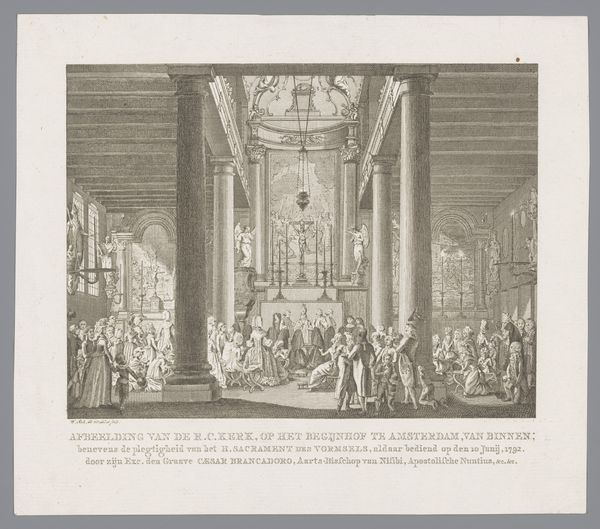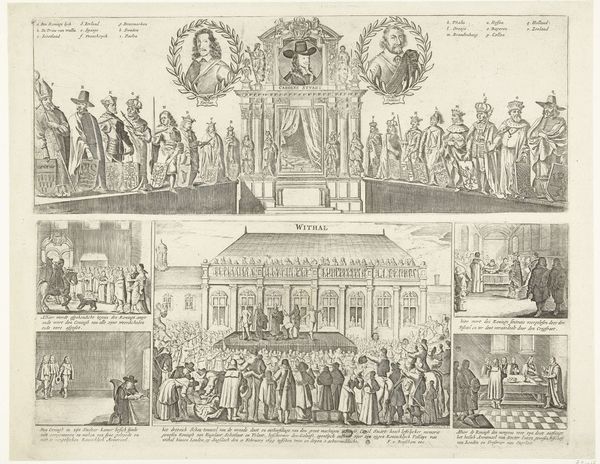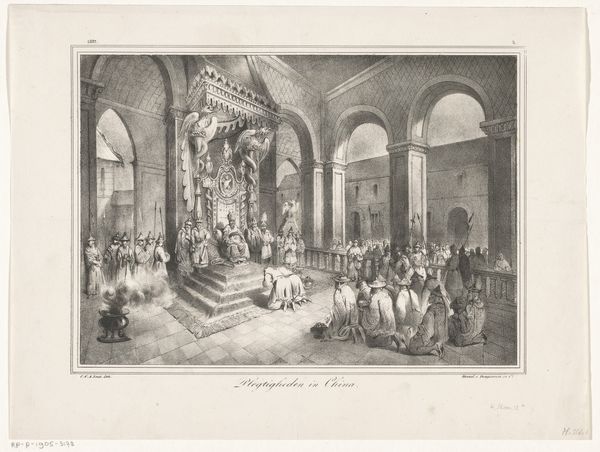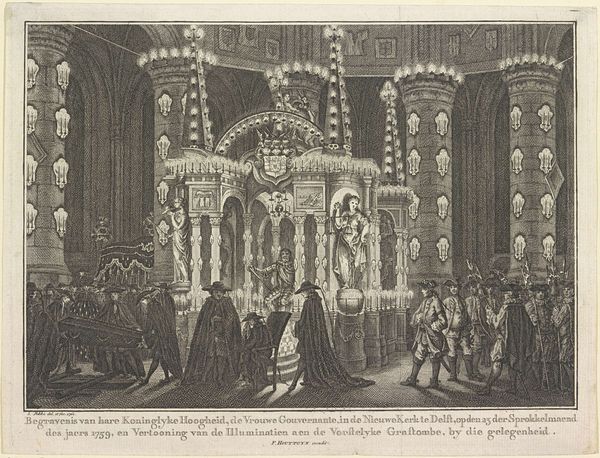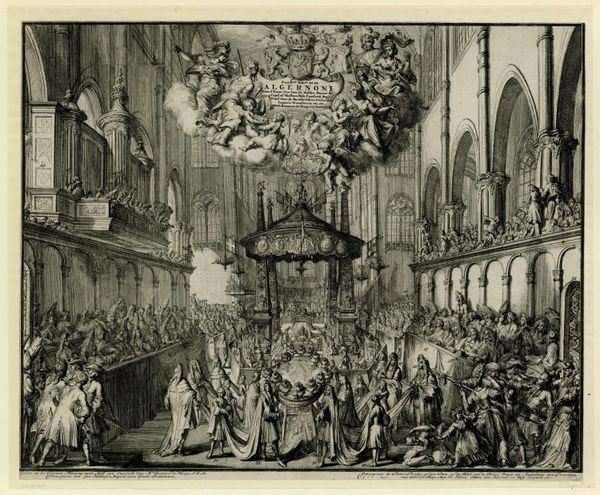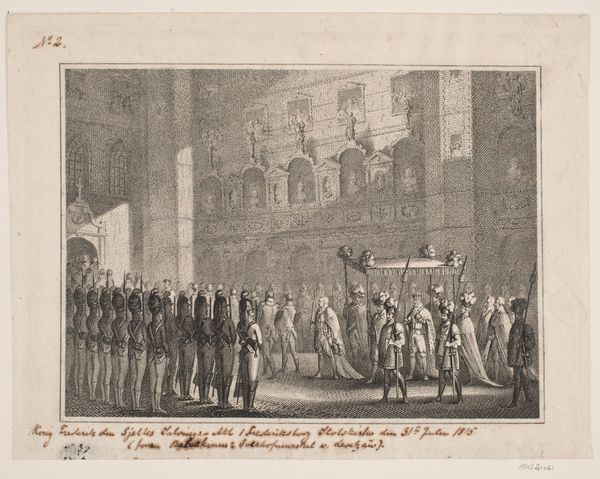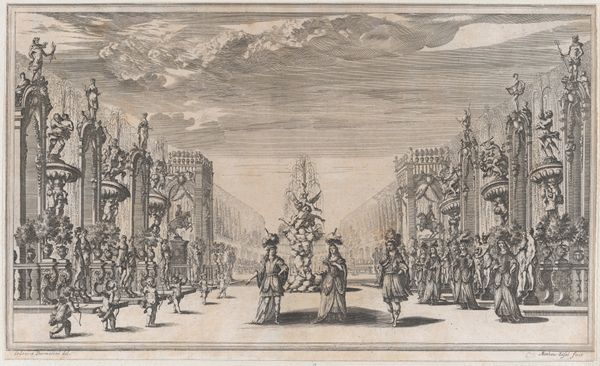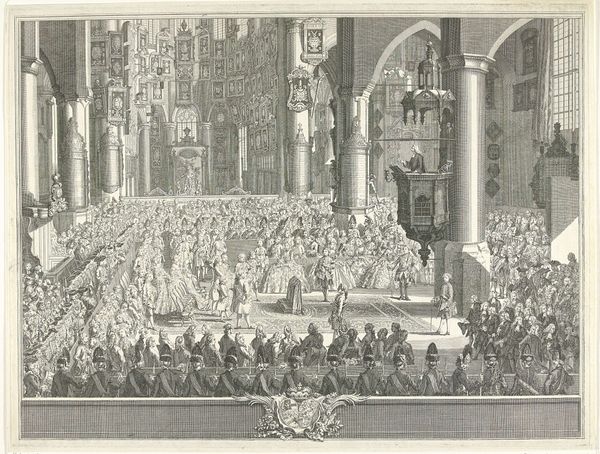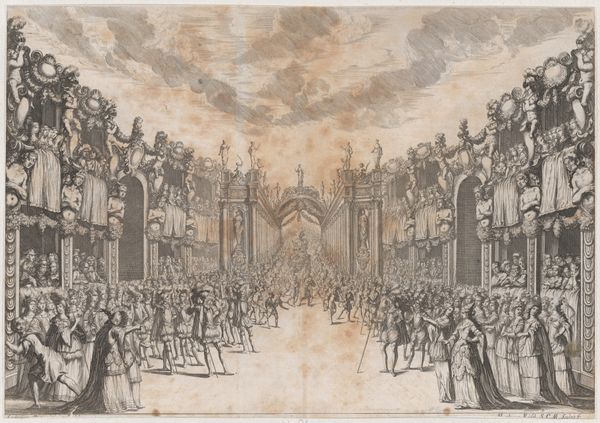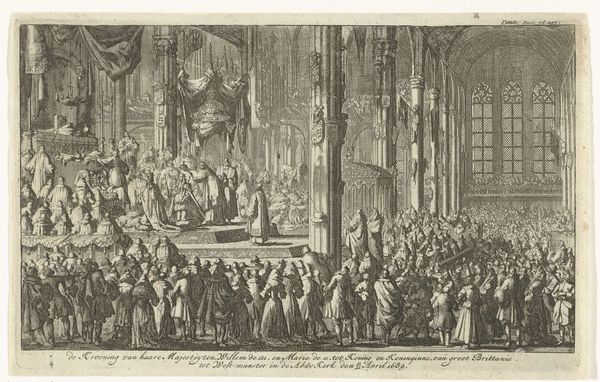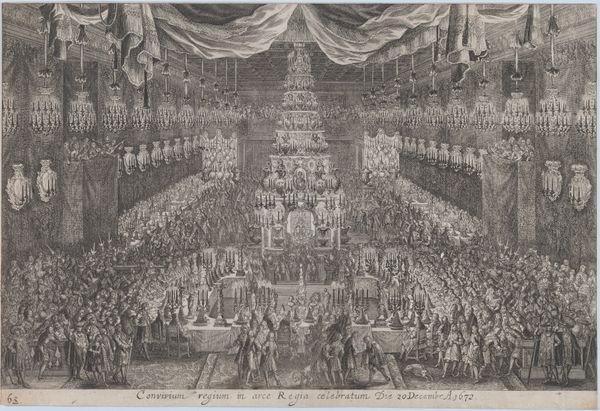
Decoration for a Masked Ball at Versailles, on the Occasion of the Marriage of Louis, Dauphin of France, and Maria Theresa, Infanta of Spain (Bal masqué donné par le roi, dans la grande galerie de Versailles, pour le mariage de Dauphin, 1745) 1764 - 1860
0:00
0:00
Dimensions: 18 3/4 x 30 1/4 in. (47.6 x 76.8 cm)
Copyright: Public Domain
Curator: What a spectacle! This print depicts the Decoration for a Masked Ball at Versailles on the occasion of the marriage of Louis, Dauphin of France, and Maria Theresa, Infanta of Spain. It's an engraving, likely dating from 1745 or shortly thereafter, made by Charles Nicolas Cochin I. The detail is astonishing, considering the medium. Editor: The sheer density of bodies and ornamentation strikes me. It's a very visually crowded composition, a swirling mass of figures within an elaborately decorated space. One can almost feel the heat and claustrophobia of that room. Curator: Versailles was more than just a palace; it was a stage for the performance of power. These balls, especially those celebrating dynastic marriages, were crucial for solidifying alliances and projecting the image of a strong, stable monarchy. Every detail, from the costumes to the décor, was carefully orchestrated to convey that message. Editor: Right, and I'm looking at the lines etched here, trying to imagine the labor involved in creating this impression, this fantasy. All those repeated chandelier shapes, the patterns on the walls. An enormous amount of repetitive skilled work was needed, and its production depended on an unequal distribution of access to power. How many hands were involved, skilled or unskilled, directly or indirectly? Curator: The image's purpose speaks volumes about art's social function at the time, serving the purposes of spectacle, promotion, and power consolidation. The print medium itself enabled wider dissemination of the image of Versailles, extending the reach of the monarchy’s symbolic authority beyond the confines of the court. Editor: So the print functioned as a kind of proto-propaganda, then. Looking closer at the textures – you can really see the difference in the treatment of surfaces, some smooth, others dense. This suggests a hierarchy of labor, as better paid craftsmen and engravers made design decisions on behalf of other lower paid artisans who worked at the shop. Curator: Exactly. Consider also the perspective and composition; the arrangement almost pulls you in, an open invitation to engage with the majesty on display. Though mediated by the print medium, it suggests the embodied experience of standing in that space, breathing that air—witnessing history in the making. Editor: Interesting to consider it an invitation... I still see more an attempt to manage social perceptions from the upper classes while obscuring and alienating the realities of production of that impression to benefit the monarchy and court. This reminds me to examine today how manufacturing continues to enable unequal dynamics of power in service to wealth. Curator: Ultimately, the print offers a valuable historical record but also raises important questions about power, labor, and representation, prompting us to critically analyze the complex relationships between art, society, and the structures that shape them. Editor: Yes, something about those textures is still gnawing at me... A lot to think about there.
Comments
No comments
Be the first to comment and join the conversation on the ultimate creative platform.
